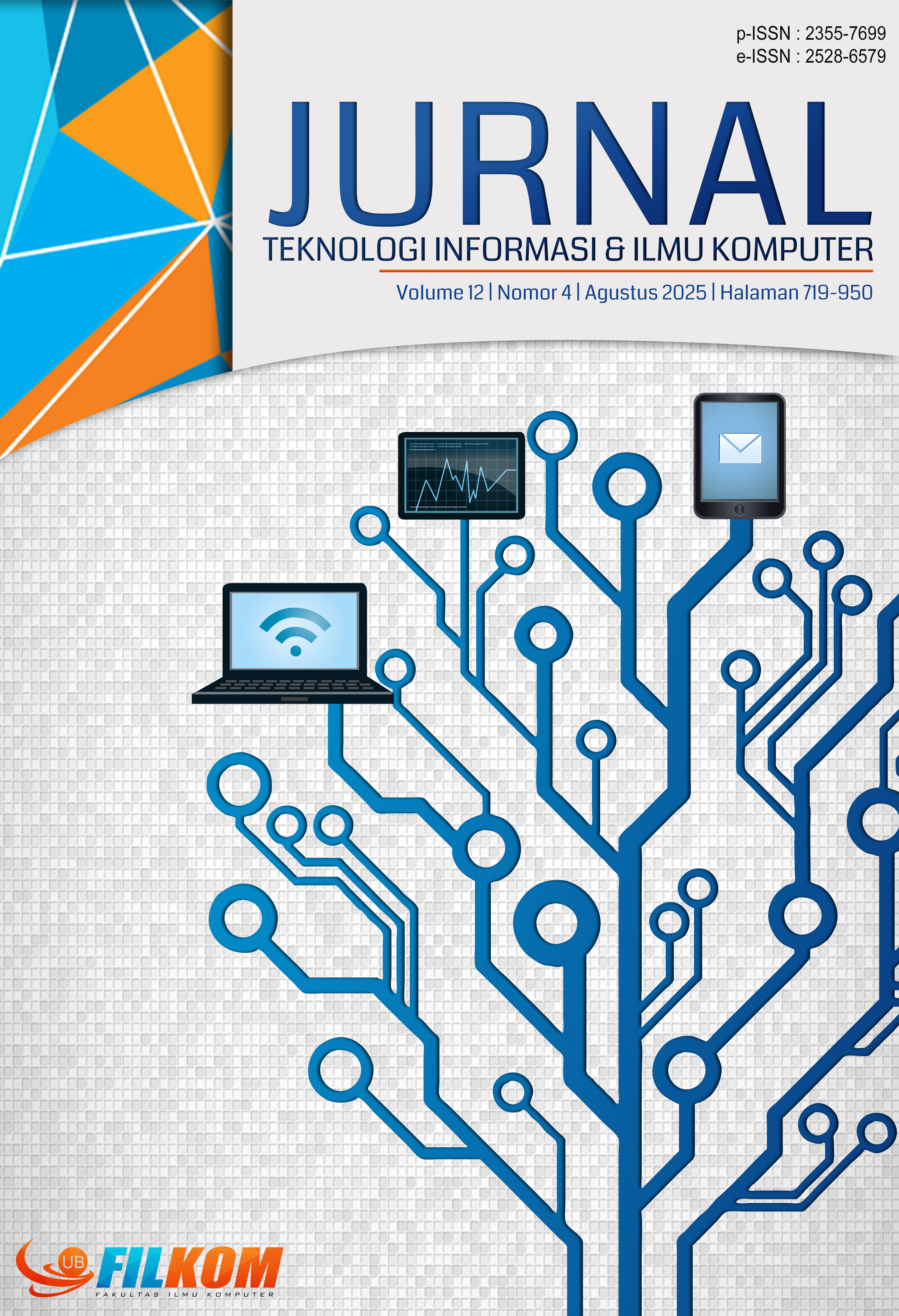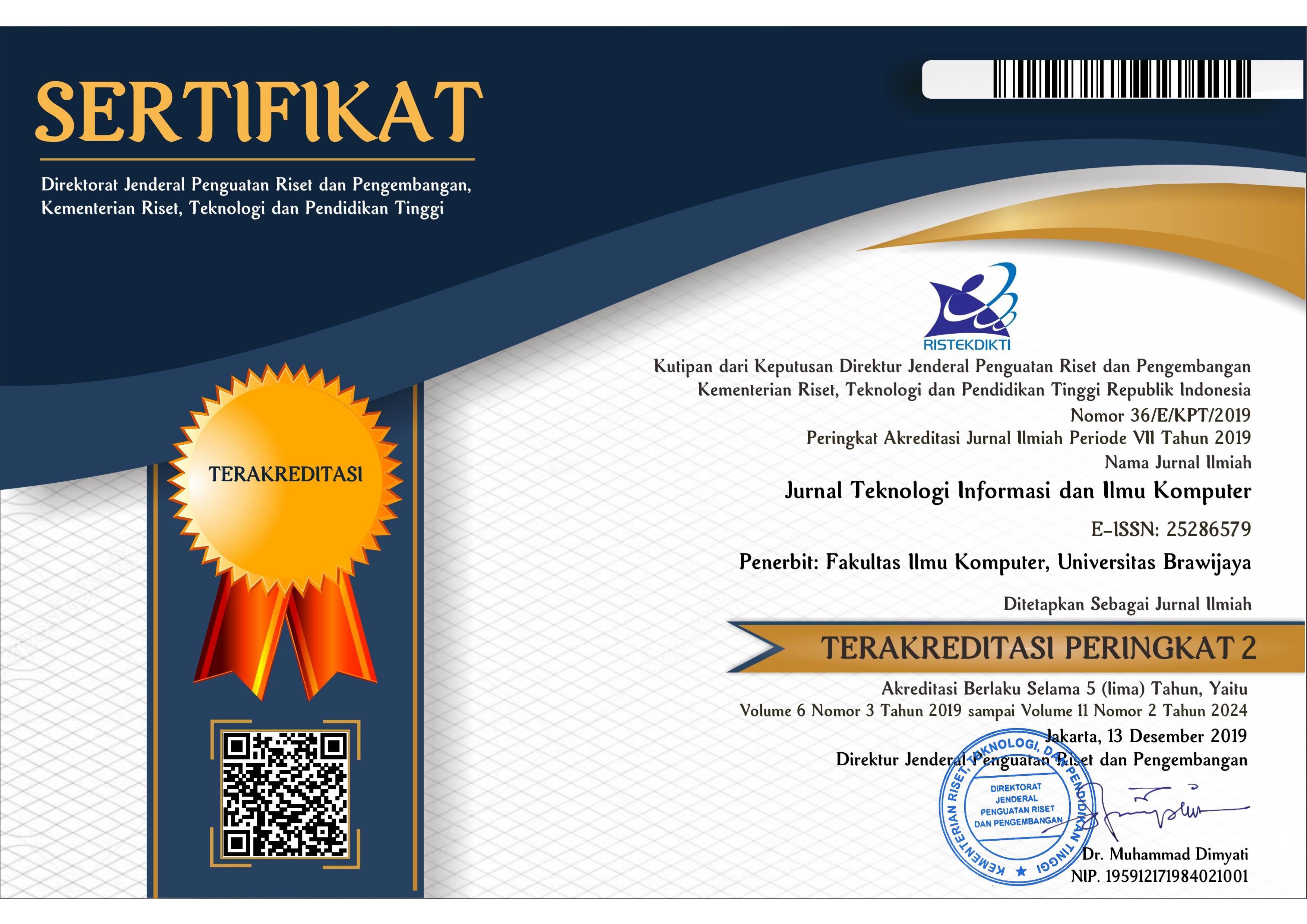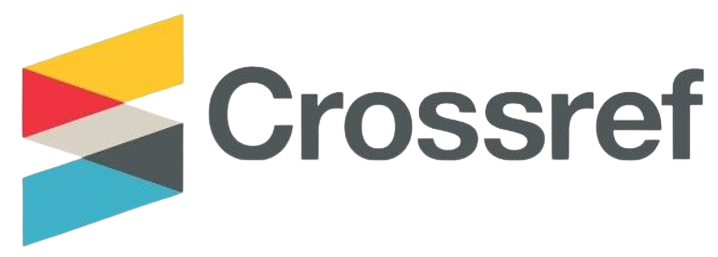Sistem Kerja Artificial Intelligence Software Aplikasi Clo 3d Pada Proses Pembuatan Produk Fashion Design
DOI:
https://doi.org/10.25126/jtiik.124Kata Kunci:
artificial intelligence, CLO 3D, fashion design, virtual realityAbstrak
Penggunaan teknologi berbasis artificial intelligence menjadi prioritas utama industri, karena tuntutan efektifitas produksi. Industri desain fashion berupaya mengefektifitaskan proses produksi desain berbasis digital menggunakan software aplikasi berbasis artificial intelligence. Software aplikasi CLO 3D merupakan salah satu software yang dapat memvisualisasikan desain fashion dalam bentuk virtual reality dengan menggunakan konsep kerja artificial intelligence. Penelitian ini merupakan jenis penelitian kualitatif studi kasus berfokus mendeskripsikan sistem kerja artificial intelligence pada prosedur pembuatan desain fashion menggunakan software aplikasi CLO 3D. Teknik pengumpulan data dengan wawancara dan observasi. Teknik pemilihan sampel menggunakan purposive sampling. Hasil penelitian bahwa prosedur pembuatan desain fashion menggunakan software aplikasi CLO 3D terdiri dari delapan tahap. Konsep kerja artificial intelligence terdapat pada tahap pertama dan delapan. Tahap pertama dapat membuat avatar berbasis virtual reality dengan menentukan spesifikasi ketentuan bentuk tubuh yang dinginkan. Tahap delapan membuat dan mengubah desain fashion dua dimensi menjadi tiga dimensi berdasarkan pola tubuh avatar yang sebelumnya sudah dibuat. Berdasarkan penelitian tersebut bahwa software aplikasi CLO 3D menerapkan konsep kerja artificial intelligence. Teknologi artificial intelligence pada software aplikasi CLO 3D dapat mempermudah dalam membuat desain fashion dalam bentuk virtual reality dan memberikan efektifitas waktu proses pembuatannya.
Abstract
The use of artificial intelligence-based technology is a top priority for the industry, due to the demands of production effectiveness. The fashion design industry seeks to make the digital-based design production process effective using artificial intelligence-based application software. The CLO 3D application software is one of the software that can visualize fashion designs in virtual reality using the concept of artificial intelligence work. This research is a type of qualitative case study research focused on describing the artificial intelligence work system in the fashion design creation procedure using the CLO 3D application software. Data collection techniques with interviews and observations. The sample selection technique uses purposive sampling. The results of the study show that the fashion design creation procedure using the CLO 3D application software consists of eight stages. The concept of artificial intelligence work is in the first and eighth stages. The first stage can create a virtual reality-based avatar by determining the specifications of the desired body shape. The eighth stage creates and changes two-dimensional fashion designs into three dimensions based on the avatar body pattern that has been previously created. Based on this research, the CLO 3D application software applies the concept of artificial intelligence work. Artificial intelligence technology in the CLO 3D application software can make it easier to create fashion designs in virtual reality and provide effectiveness in the manufacturing process time.
Downloads
Referensi
AZIZAH, A. A., & PUTRI, O. A., 2022. Pendekatan Analisis Kualitatif Manajemen Pengetahuan. Al-Muraqabah: Journal of Management and Sharia Business, 2(1), pp.107-125. https://jurnalfebi.iainkediri.ac.id/index.php/muraqobah/article/view/192
CAO, Y., & WANG, S., 2023. Research on the application of CLO3D technology in the structure design of national costume. Advances in Economics and Management Research, 6(1), pp.158-158. https://madison-proceedings.com/index.php/aemr/article/view/1223
CHAN, I., AU, J., HO, C., & LAM, J., 2021. Creation of 3D printed fashion prototype with multi-coloured texture: a practice-based approach. International Journal of Fashion Design, Technology and Education, 14(1), pp.78-90. https://www.tandfonline.com/doi/abs/10.1080/17543266.2020.1861342
EL-NEWASHY, R., & EL-SAYED, H., 2022. Adopting CLO3D Simulation System for Evaluation of Fitting and Stretch-Ability of Selected Bio-Treated Knitted Polyester/Lycra Fabrics. Journal of Heliyon is an all-science, 1(1). pp.1-18. https://papers.ssrn.com/sol3/papers.cfm?abstract_id=4074494
EL-NEWASHY, R., & ZAKARIA EL-SAYED, H. E. D., 2022. Evaluation and CLO3D Simulation of Some Characteristics of Bio-treated Knitted Polyester/Lycra Fabrics. Egyptian Journal of Chemistry, 65(8), pp.779-789. https://ejchem.journals.ekb.eg/?_action=article&kw=356293&_kw=CLO3D
HANYFAH, S., FERNANDES, G. R., & BUDIARSO, I., 2022. Penerapan metode kualitatif deskriptif untuk aplikasi pengolahan data pelanggan pada car wash. In Semnas Ristek Seminar Nasional Riset Dan Inovasi Teknologi, 6(1), pp.339–344. https://proceeding.unindra.ac.id/index.php/semnasristek/article/view/5697
HUANG, S., & HUANG, L. 2022. CLO3D‐based 3D virtual fitting technology of down jacket and simulation research on dynamic effect of cloth. Wireless Communications and Mobile Computing, 1(1), pp.1-11. https://onlinelibrary.wiley.com/doi/full/10.1155/2022/5835026
INDARTI, I., 2020. Metode Proses Desain dalam Penciptaan Produk Fashion dan Tekstil. BAJU: Journal of Fashion and Textile Design Unesa, 1(2), pp.128-137. https://ejournal.unesa.ac.id/index.php/baju/article/view/37340
KHAFAJI, S. H. A., 2022. Employment of the Programs (3DS Max & Marvelous Designer) in Draping the Pleats on the Mannequin. Era Journal for Humanities and Sociology. 4(1). pp.200-228. https://www.ejhas.com/index.php/ejhas/article/view/215
KRISMAWAN, D. A., 2021. Fast Fashion Dalam Konteks Hak Kekayaan Intelektual (Urgensi Perlindungan Hukum Karya Desain Fashion Sebagai Bagian Ekonomi Kreatif). Jurnal Legislasi Indonesia, 18(2), pp.282-295. https://garuda.kemdikbud.go.id/documents/detail/2098429
LEE, J. H., YANG, E. K., LEE, E. J., MIN, S. Y., SUN, Z. Y., & XUE, B. J., 2021. The use of VR for collaborative exploration and enhancing creativity in fashion design education. International Journal of Fashion Design, Technology and Education, 14(1), pp.48-57. https://www.tandfonline.com/doi/abs/10.1080/17543266.2020.1858350
LESTARI, A. S., & KHARNOLIS, E. M., 2020. Penerapan Aplikasi Hexagon Tiga Dimensi Pada Busana Pesta Malam. BAJU: Journal of Fashion and Textile Design Unesa, 1(1), pp.20-27. https://ejournal.unesa.ac.id/index.php/baju/article/view/35870
MANURUNG, K., 2022. Mencermati Penggunaan Metode Kualitatif Di Lingkungan Sekolah Tinggi Teologi. Filadelfia: Jurnal Teologi Dan Pendidikan Kristen, 3(1), pp.285-300. https://sttimanuelpacet.ac.id/e-journal/index.php/filadelfia/article/view/48
NGUYEN, M., H., T., & NGUYEN, M., T., 2022. The design, simulation, and adjustment of the Vietnam men’s Ao dai on the CLO3D software. BOHR International Journal of Smart Computing and Information Technology (BIJSCIT). 3(1), pp.50-56. https://journals.bohrpub.com/index.php/bijscit/article/view/281
NOBILE, T. H., NORIS, A., KALBASKA, N., & CANTONI, L., 2021. A review of digital fashion research: before and beyond communication and marketing. International journal of fashion design, technology and education, 14(3), pp.293-301. https://www.tandfonline.com/doi/full/10.1080/17543266.2021.1931476
NUGRAHA, H. D., PONIMAN, D., KENCANASARI, R. V., MAOSUL, A., & RUSYDI, M. I., 2020. Meta-Analisis Model Pembelajaran Vokasi dalam Kondisi Covid-19. Jurnal Dinamika Vokasional Teknik Mesin, 5(2), pp.83-94. https://journal.uny.ac.id/index.php/dynamika/article/view/34779
NUGROHO, S. A., HADI, A. P., PRIYADI, A., & PUJIASTUTI, E. K., 2023. Peragaan Busana Virtual Sebagai Sarana Promosi Di Obeda Boutique Salatiga. Jurnal Publikasi Ilmu Komputer dan Multimedia, 2(2), pp.38-51. https://ejurnal.stie-trianandra.ac.id/index.php/jupikom/article/view/1713
NURSARI, F., & HERVIANTI, D. F., 2017. Potensi Penerapan Konsep Zero Waste Pada Busana Tradisioanal Studi Kasus: Kimono. Jurnal Rupa, 2(1), pp.67-75. https://journals.telkomuniversity.ac.id/rupa/article/view/754
PERMANA, A. A., DARMAWAN, R., SAPUTRI, F. R., HARTO, B., AL-HAKIM, R. R., WIJAYANTI, R. R., ... & RUKMANA, A. Y. (2023). Artificial Intelligence Marketing. Padang: Global Eksekutif Teknologi. https://www.researchgate.net/profile/Budi-Harto/publication/373043823_ARTIFICIAL_INTELLIGENCE_MARKETING/links/64d522131290c33cce86a43f/ARTIFICIAL-INTELLIGENCE-MARKETING.pdf
PUTRI, N. A., 2016. Desain Strategi Pemasaran Online Pada Fullus Fashion Melalui Evaluasi Benchmarking. Jurnal Performa: Jurnal Manajemen dan Start-up Bisnis, 1(1), pp.118-127. https://journal.uc.ac.id/index.php/performa/article/view/105
SATRINIA, D., FIRMAN, R. R., & FITRIATI, T. N., 2023. Potensi Artificial Intelligence dalam Dunia Kreativitas Desain. Journal of Informatics and Communication Technology (JICT), 5(1), pp.159-168. https://ejournal.akademitelkom.ac.id/j_ict/index.php/j_ict/article/view/164
STARKEY, S., ALOTAIBI, S., STRIEBEL, H., TEJEDA, J., FRANCISCO, K., & RUDOLPH, N., 2021. Fashion inspiration and technology: virtual reality in an experimental apparel design classroom. International Journal of Fashion Design, Technology and Education, 14(1), pp.12-20. https://www.tandfonline.com/doi/abs/10.1080/17543266.2020.1844807
VRLJANAC, M., ŠIKMAN, K., SIMIĆ, M., NAUMOVIĆ, T., & DESPOTOVIĆ-ZRAKIĆ, M., 2023. Application of 3D Modeling in the Fashion Industry. In E-business technologies conference proceedings, 3(1), pp.176-184. https://ebt.rs/journals/index.php/conf-proc/article/view/172
Wang X., Li, Y., & Wang X., 2021. A study of replication of Qing Dynasty dragon robes based on CLO3D technology. Journal of Physics: Conference Series, 1(1), pp.1-6. https://iopscience.iop.org/article/10.1088/1742-6596/1986/1/012069/meta
WANG, Y. X., & LIU, Z. D., 2020. Virtual clothing display platform based on CLO3D and evaluation of fit. Journal of Fiber Bioengineering and Informatics, 13(1), pp.37-49. https://global-sci.org/intro/article_detail/jfbi/16245.html
ZAHARA, S. L., AZKIA, Z. U., & CHUSNI, M. M. (2023). Implementasi Teknologi Artificial Intelligence (AI) dalam Bidang Pendidikan, Jurnal Penelitian Sains Dan Pendidikan (JPSP), 3(1), pp.15-20. https://garuda.kemdikbud.go.id/documents/detail/3426637
Unduhan
Diterbitkan
Terbitan
Bagian
Lisensi
Hak Cipta (c) 2025 Jurnal Teknologi Informasi dan Ilmu Komputer

Artikel ini berlisensiCreative Commons Attribution-ShareAlike 4.0 International License.

Artikel ini berlisensi Creative Common Attribution-ShareAlike 4.0 International (CC BY-SA 4.0)
Penulis yang menerbitkan di jurnal ini menyetujui ketentuan berikut:
- Penulis menyimpan hak cipta dan memberikan jurnal hak penerbitan pertama naskah secara simultan dengan lisensi di bawah Creative Common Attribution-ShareAlike 4.0 International (CC BY-SA 4.0) yang mengizinkan orang lain untuk berbagi pekerjaan dengan sebuah pernyataan kepenulisan pekerjaan dan penerbitan awal di jurnal ini.
- Penulis bisa memasukkan ke dalam penyusunan kontraktual tambahan terpisah untuk distribusi non ekslusif versi kaya terbitan jurnal (contoh: mempostingnya ke repositori institusional atau menerbitkannya dalam sebuah buku), dengan pengakuan penerbitan awalnya di jurnal ini.
- Penulis diizinkan dan didorong untuk mem-posting karya mereka online (contoh: di repositori institusional atau di website mereka) sebelum dan selama proses penyerahan, karena dapat mengarahkan ke pertukaran produktif, seperti halnya sitiran yang lebih awal dan lebih hebat dari karya yang diterbitkan. (Lihat Efek Akses Terbuka).















